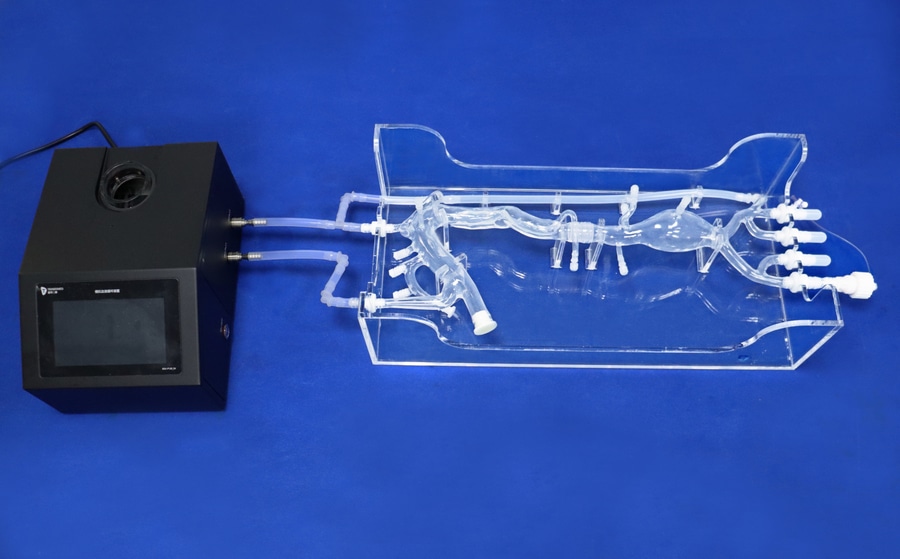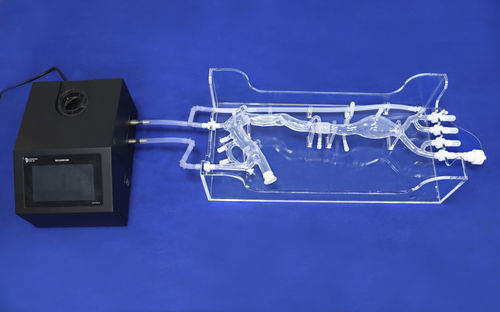
#Industry News
Abdominal Aortic Aneurysm: Symptoms, Surgery Guidelines, and Treatment
Model:Abdominal Aortic Aneurysm II (FBD013)
Understanding Abdominal Aortic Aneurysm (AAA)
An abdominal aortic aneurysm refers to the abnormal dilation of the abdominal aorta, where the diameter increases by more than 50%. This condition predominantly affects elderly males, with a male-to-female ratio of 10:3, especially in populations that smoke. Common risk factors for this condition include smoking, hypertension, advanced age, and male gender.
Clinical Manifestations of Abdominal Aortic Aneurysm
1.Pulsatile Abdominal Mass: Most patients may notice a pulsatile mass in the abdomen, often palpable around the navel or upper left abdomen, sometimes accompanied by vascular murmurs.
2.Abdominal Pain: Patients typically experience abdominal discomfort or mild bloating. Significant enlargement of the aneurysm can lead to pronounced lower back pain if it compresses the vertebrae or spinal nerve roots. Sudden, severe, and persistent lower back pain may indicate a ruptured aneurysm, necessitating immediate medical attention.
3.Compression of Abdominal Organs: A large aneurysm may compress the small intestine, causing gastrointestinal symptoms like nausea, vomiting, and abdominal distension. Compression of the ureter can result in urinary obstruction, presenting as back pain, increased urination frequency, and urgency. In rare cases, compression of the bile duct can lead to jaundice.
Surgical Guidelines for Abdominal Aortic Aneurysm
In male patients, surgical intervention is recommended for abdominal aortic aneurysms with a diameter greater than 5.5 cm (excluding special cases like eccentric aneurysms or pseudoaneurysms). Due to their smaller normal vessel diameter, female patients may require surgery for aneurysms larger than 5 cm. Additionally, if an aneurysm has not reached these thresholds but shows rapid growth (over 0.5 cm within six months or over 1 cm within a year), surgical treatment is also warranted.
Treatment Options for Abdominal Aortic Aneurysm
1.Medical Management: Controlling blood pressure, heart rate, lipid levels, and smoking cessation measures can help to some extent in managing aneurysm diameter progression.
2.Surgical Interventions: Surgical options include aneurysm excision, artificial graft placement, and hybrid procedures.
3.Endovascular Repair: Endovascular repair for abdominal aortic aneurysms is a minimally invasive surgical approach that offers reduced trauma compared to traditional surgery, lowering the risk of complications and mortality. This method is particularly beneficial for high-risk patients unable to tolerate open surgery or at risk of severe postoperative complications. The advancement of techniques like fenestrated and branched stent grafts has made endovascular repair increasingly viable for complex abdominal aortic aneurysms that previously necessitated open surgery. For patients with involvement of visceral arteries unsuitable for endovascular repair and with severe comorbidities precluding open surgery, a hybrid approach combining open surgery and endovascular repair may be employed to minimize surgical trauma and facilitate minimally invasive repair procedures.
Crafted meticulously from authentic CT scan data to guarantee physiological accuracy, this 3D-printed model is a pivotal instrument for pushing the boundaries of Abdominal Aortic Aneurysm (AAA) treatments. Customized for vascular interventions training and the advancement of medical devices, this model facilitates interactive demonstrations, training programs, and promotional campaigns within the realm of AAA treatment. Featuring a comprehensive depiction of the AAA condition, including the aorta arch, it stands as an essential tool for healthcare professionals and device manufacturers seeking to enrich their knowledge and proficiency in this critical healthcare domain.
Renowned for its precise anatomical detail and lifelike portrayal of Abdominal Aortic Aneurysms, this model delivers a distinct advantage in medical education and device innovation. Medical professionals can participate in immersive training sessions to refine their diagnostic and treatment skills for AAA using this hands-on model. Additionally, researchers and innovators can leverage this model as a testing ground for new devices and procedures, ensuring the utmost effectiveness and safety in the field of AAA treatment. Its faithfulness to real patient anatomy serves as a vital link between theoretical understanding and practical application, establishing it as an indispensable resource for elevating the standard of care in abdominal aortic aneurysm management.





